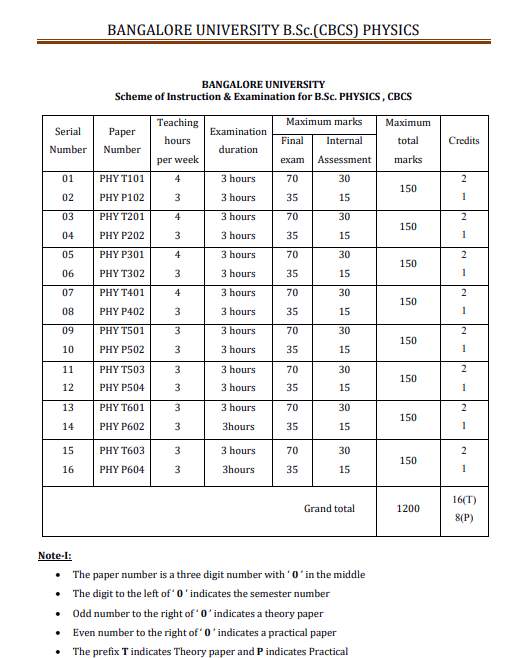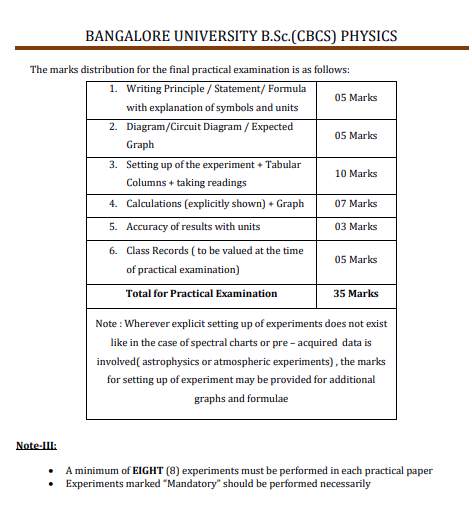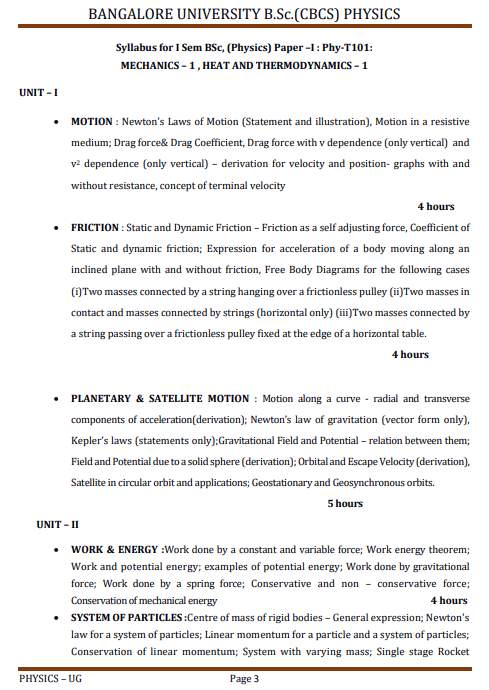|
#9
23rd November 2019, 02:33 PM
| |||
| |||
| Re: B Sc Physics Syllabus Bangalore University
The syllabus of B Sc (Bachelor of Science) Physics Program offered by Bangalore University is as follows: Syllabus for I Sem BSc, (Physics) Paper –I : Phy-T101: MECHANICS – 1 , HEAT AND THERMODYNAMICS – 1 UNIT – I • MOTION : Newton’s Laws of Motion (Statement and illustration), Motion in a resistive medium; Drag force& Drag Coefficient, Drag force with v dependence (only vertical) and v2 dependence (only vertical) – derivation for velocity and position- graphs with and without resistance, concept of terminal velocity 4 hours • FRICTION : Static and Dynamic Friction – Friction as a self adjusting force, Coefficient of Static and dynamic friction; Expression for acceleration of a body moving along an inclined plane with and without friction, Free Body Diagrams for the following cases (i)Two masses connected by a string hanging over a frictionless pulley (ii)Two masses in contact and masses connected by strings (horizontal only) (iii)Two masses connected by a string passing over a frictionless pulley fixed at the edge of a horizontal table. 4 hours • PLANETARY & SATELLITE MOTION : Motion along a curve - radial and transverse components of acceleration(derivation); Newton’s law of gravitation (vector form only), Kepler’s laws (statements only);Gravitational Field and Potential – relation between them; Field and Potential due to a solid sphere (derivation); Orbital and Escape Velocity (derivation), Satellite in circular orbit and applications; Geostationary and Geosynchronous orbits. 5 hours UNIT – II • WORK & ENERGY :Work done by a constant and variable force; Work energy theorem; Work and potential energy; examples of potential energy; Work done by gravitational force; Work done by a spring force; Conservative and non – conservative force; Conservation of mechanical energy 4 hours • SYSTEM OF PARTICLES :Centre of mass of rigid bodies – General expression; Newton's law for a system of particles; Linear momentum for a particle and a system of particles; Conservation of linear momentum; System with varying mass; Single stage Rocket motion – Velocity & Acceleration with and without gravity; Elastic and inelastic collisions (only 2D) 4 hours • BLACK BODY RADIATION : Black body radiation and its spectral energy distribution; Kirchhoff’s law, Stefan-Boltzmann's law, Wien’s displacement law, Rayleigh-Jeans law (Statements), Derivation of Planck’-s law – deduction of Wien’s Law & Rayleigh – Jeans Law, Solar constant and its determination using Angstrom’s Pyrheliometer; Estimation of the surface temperature of the sun 5 hours Syllabus B Sc Physics Program Bangalore University     |